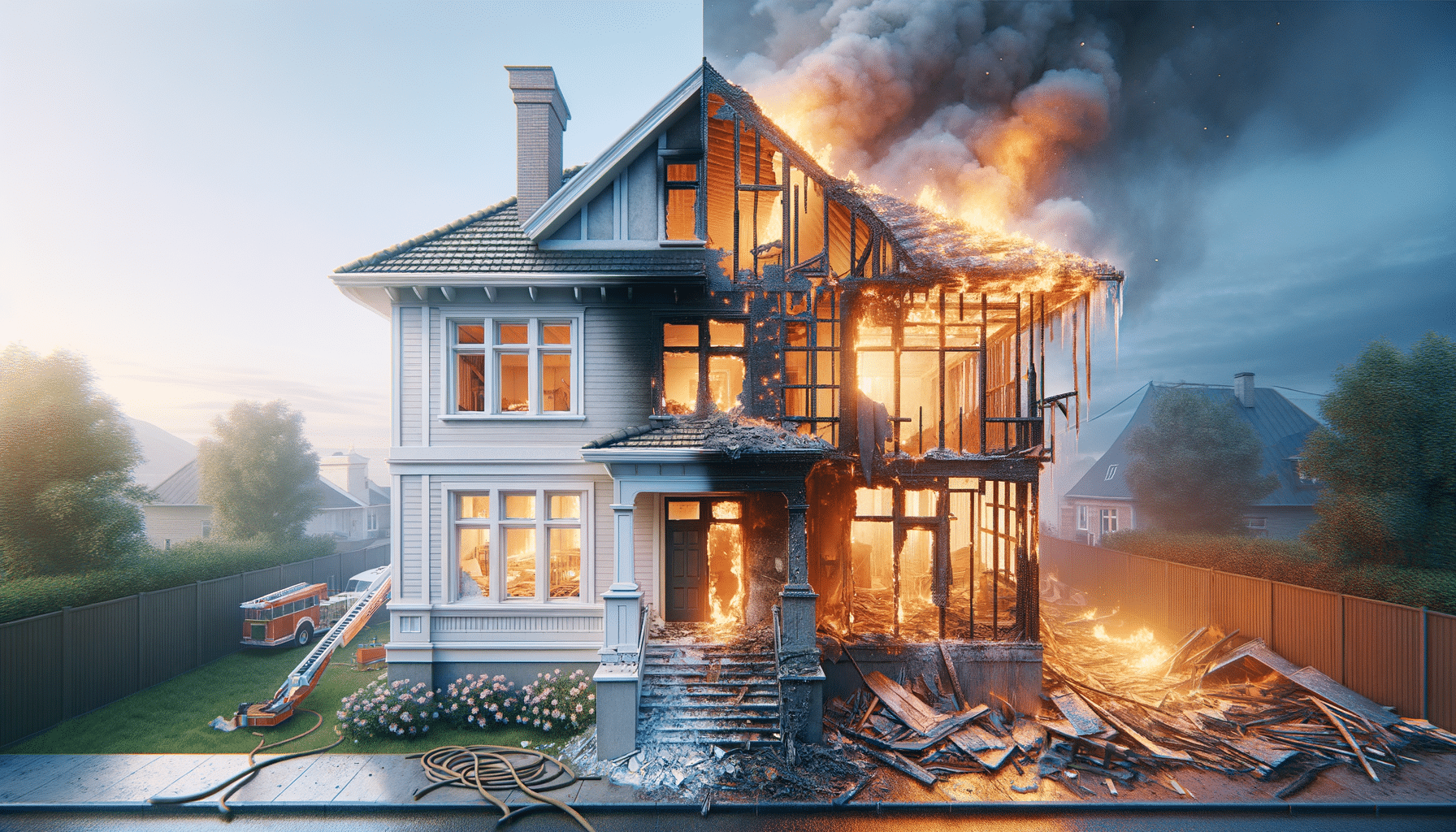
Understanding Fire Damage and Restoration Services
Introduction to Fire Damage
Fire damage is a devastating occurrence that can affect any property, leaving behind a trail of destruction. The impact of a fire is not limited to the visible charred remains; it extends to structural integrity, air quality, and even emotional wellbeing. Understanding the extent of fire damage is crucial for property owners, as it guides the restoration process and helps in making informed decisions about repairing and rebuilding.
When a fire occurs, it not only burns materials but also releases a multitude of chemicals and particulates into the air. These can pose health risks to individuals who are exposed. Moreover, the water used in firefighting efforts can further damage the property, leading to issues such as mold growth. Consequently, addressing fire damage requires a comprehensive approach that considers all these factors.
Fire restoration services play a pivotal role in mitigating these effects. They offer expertise in assessing damage, removing debris, and restoring properties to their pre-fire condition. This article explores the different facets of fire damage and the restoration services available to address them.
The Immediate Aftermath of a Fire
In the immediate aftermath of a fire, the priority is ensuring the safety of all individuals involved. Once safety is secured, attention turns to assessing the extent of the damage. This initial assessment is crucial for determining the scope of restoration work required.
Fire damage can be categorized into three main types: primary, secondary, and tertiary. Primary damage refers to the destruction caused directly by the flames. Secondary damage includes issues such as smoke and soot, which can penetrate walls, furniture, and other materials. Tertiary damage results from the water and chemicals used to extinguish the fire, leading to potential mold growth and corrosion.
Professional restoration services begin by evaluating these damages. They use specialized equipment to identify areas that are unsafe or require immediate attention. This assessment forms the foundation for developing a comprehensive restoration plan tailored to the specific needs of the property.
Fire Restoration Process
The fire restoration process involves several stages, each critical to ensuring the effective recovery of the property. The first step is often securing the site. This may involve boarding up windows, covering holes in the roof, and ensuring the structural stability of the building.
Next, professionals focus on cleaning and removing debris. This step is essential to prevent further damage and to prepare the site for repairs. Soot and smoke residues are meticulously cleaned from surfaces, as they can cause permanent staining and odor if left untreated.
Once the site is cleaned, the restoration team addresses water damage. This involves drying out the property and treating areas susceptible to mold growth. Advanced drying equipment and techniques are employed to ensure thorough moisture removal.
Finally, the restoration phase begins. This may include repairing or replacing damaged structures, restoring electrical and plumbing systems, and repainting walls. Throughout the process, professionals work closely with property owners to ensure that the restoration aligns with their needs and expectations.
Choosing a Fire Restoration Service
Selecting the right fire restoration service is a crucial decision that can significantly impact the recovery process. There are several factors to consider when making this choice, including the company’s experience, reputation, and range of services offered.
Look for companies with a proven track record in handling fire damage. Experienced professionals are more likely to have encountered a variety of scenarios and can offer solutions tailored to specific challenges. Reputation is also important; seek out reviews and testimonials from previous clients to gauge the quality of service provided.
Additionally, consider the range of services offered. Comprehensive restoration services should cover all aspects of fire damage, from initial assessment to final repairs. Some companies may also offer additional services such as odor removal and air quality testing, which can be beneficial in ensuring a safe and habitable environment post-restoration.
Ultimately, the goal is to choose a service that provides confidence and peace of mind during a challenging time.
Conclusion: The Importance of Professional Fire Restoration
Fire damage is a complex issue that requires a multifaceted approach to address effectively. Professional fire restoration services offer the expertise and resources necessary to navigate the aftermath of a fire, ensuring that properties are restored safely and efficiently.
By understanding the different types of fire damage and the restoration process, property owners can make informed decisions that facilitate recovery. Choosing a reputable and experienced restoration service is crucial in achieving a successful outcome.
In conclusion, while fire damage presents significant challenges, the availability of specialized restoration services provides a pathway to recovery. These services not only restore properties but also offer reassurance and support during a difficult time, helping individuals and communities rebuild and move forward.


